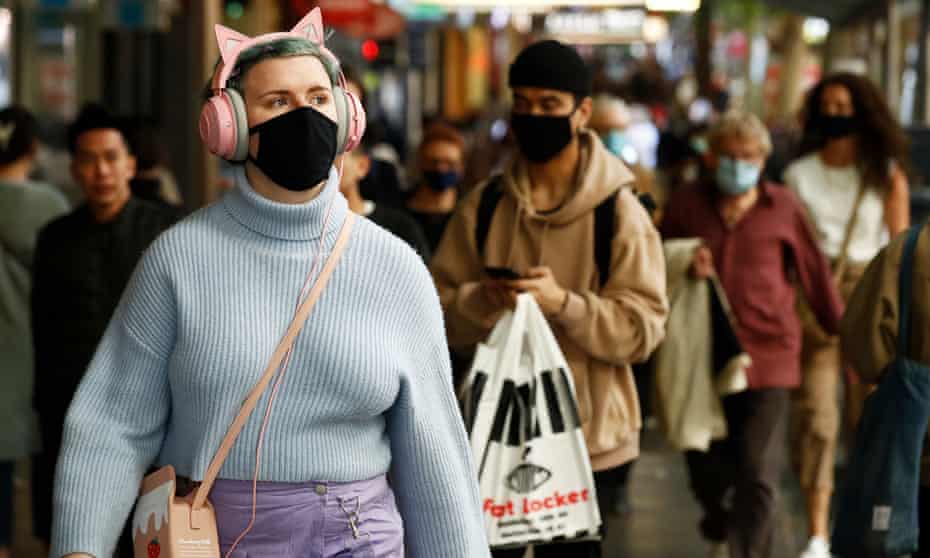Extract from The Guardian
Should you swap your reusable mask for a P2, N95 or KF94? And which is best? We ask the experts.
Last modified on Wed 12 Jan 2022 03.32 AEDT
Authorities in several Australian states have reintroduced mask mandates as a result of the recent surge in Covid cases.
Earlier in the pandemic, amid PPE shortages for healthcare workers, the public was encouraged to wear reusable cloth masks or surgical masks, while P2/N95 respirators were not recommended for community use.
But the Omicron variant’s increased transmissibility has prompted the question: should you consider switching your reusable mask for a respirator instead?
Differing protection
The latest guidance from the Australian Health Protection Principal Committee, published in November, suggests “individuals choosing to wear masks in the community may use any type of well-fitted mask”.
In the US, the Centers for Disease Control and Prevention (CDC) is considering changing its guidance to suggest that people who can consistently wear N95s instead of cloth masks should do so, the Washington Post reported on Tuesday.
“It’s very important that with Omicron – it’s just so transmissible – that people wear the best quality mask they can,” said Dr Karina Powers, an occupational health physician in Western Australia.
“Cloth masks are not enough: there are either not enough layers to filter out the viral particles or the weave is too loose,” she said.
Surgical masks, like P2/N95 respirators, are made from three layers of meltblown polypropylene, and contain an electrostatic charge that traps particles being breathed in or out.
However, surgical masks were initially designed for “source control” – worn by doctors and nurses to minimise the risk of contaminating a surgical area or infecting their patients.
“They’re not designed to protect [the wearer] from airborne disease,” Powers said.
Hassan Vally, an associate professor in epidemiology at Deakin University, said that studies on previous Covid variants show that an N95 mask is better than a surgical mask, which is better than a cloth mask.
“If you’re in a higher risk situation, you want to be wearing the best mask you possibly can,” he said.
P2, N95, KN95, KF94 respirators – what is the difference?
Respirators sold in Australia must meet minimum protective standards. The P2 class of respirators is certified in Australia as filtering 95% of small airborne particles, and is essentially equivalent to the N95 standard set by NIOSH, the US’s occupational safety body.
“It’s not the exactly same, but for all intents and purposes, it’s very similar,” said Prof Malcom Sim, president of the Australasian Faculty of Occupational and Environmental Medicine.
KN95s are manufactured in China, with an equivalent standard set by the Chinese government. The CDC estimates, however, that about 60% of KN95s available in the US are counterfeit products that don’t meet NIOSH standards.
“Very few of those are accepted for use here in the industrial environment, because they don’t quite meet the Australian standard that we have for P2 respirators,” Sim said.
KF94s are manufactured in South Korea to meet a regulated standard. The respirator stands for “Korean filter” with a 94% filtration rate.
Should everyone use respirators?
Powers says ideally the government should provide everyone with free P2 masks. “So many [people] either don’t have access or don’t know how to find these or they’re not available in the chemist.”
“This has been an airborne disease all the way along, and really we should have had supply from the beginning,” she said. “We will be far quicker at cutting outbreaks of disease and preventing large outbreaks starting if we are readily able to have access to these masks when needed.”
But Sim believes P2 class respirators are less useful for the general public than in specific workplace settings such as hospitals. “They’re not designed for general use out in the community,” he said. “You need to be trained in how to use them, they need to be fit tested for them to perform at their proper level of protection, and they’re not really designed for taking on … [and] off.”
“I think we should be putting the emphasis on other prevention measures: sitting outside, density limits, being very careful in your own household with inviting people around,” Sim said.
Vally agrees that the protection of P2 respirators is only useful if properly worn. “There’s no point in having that increased cost … if they’re not worn properly and they don’t actually work in the way they’re supposed to.”
“We continue to offer a range of P2 respirators for our retail and commercial customers,” said Ben Shanley, a category manager at Bunnings, in a statement. “Overall we’re not experiencing any widespread product availability issues at this time.”

Prof Trent Twomey, the national president the Pharmacy Guild of Australia, said the Omicron variant had “sparked renewed demand” for P2 respirators. “Clearly P2/N95 masks are preferable to cloth but any mask is better than none,” he said.
Can respirators be reused?
When used by healthcare workers, surgical and P2 masks are supposed to be thrown away after a single use.
Powers says people in the general community can re-use P2 respirators. “You can drop your risk of transmission of Omicron by simply wearing the respirator and putting it in the sun, drying it out. You can keep using it … until the elastic breaks.”
Peter Tsai, the inventor of the N95, has previously recommended buying seven of the respirators and rotating them daily, so that virus particles have time to become inactivated in the week between a mask being used twice.
It’s important to note that washing single-use masks with soap and water, or sanitising them with alcohol, significantly decreases how effectively they can filter particles.
Overseas, researchers have found that N95s can be reused at least 25 times after being decontaminated with vaporised hydrogen peroxide, without compromising their filtration system. However, while this could be useful in the healthcare setting, it’s not an accessible method for personal use.

No comments:
Post a Comment